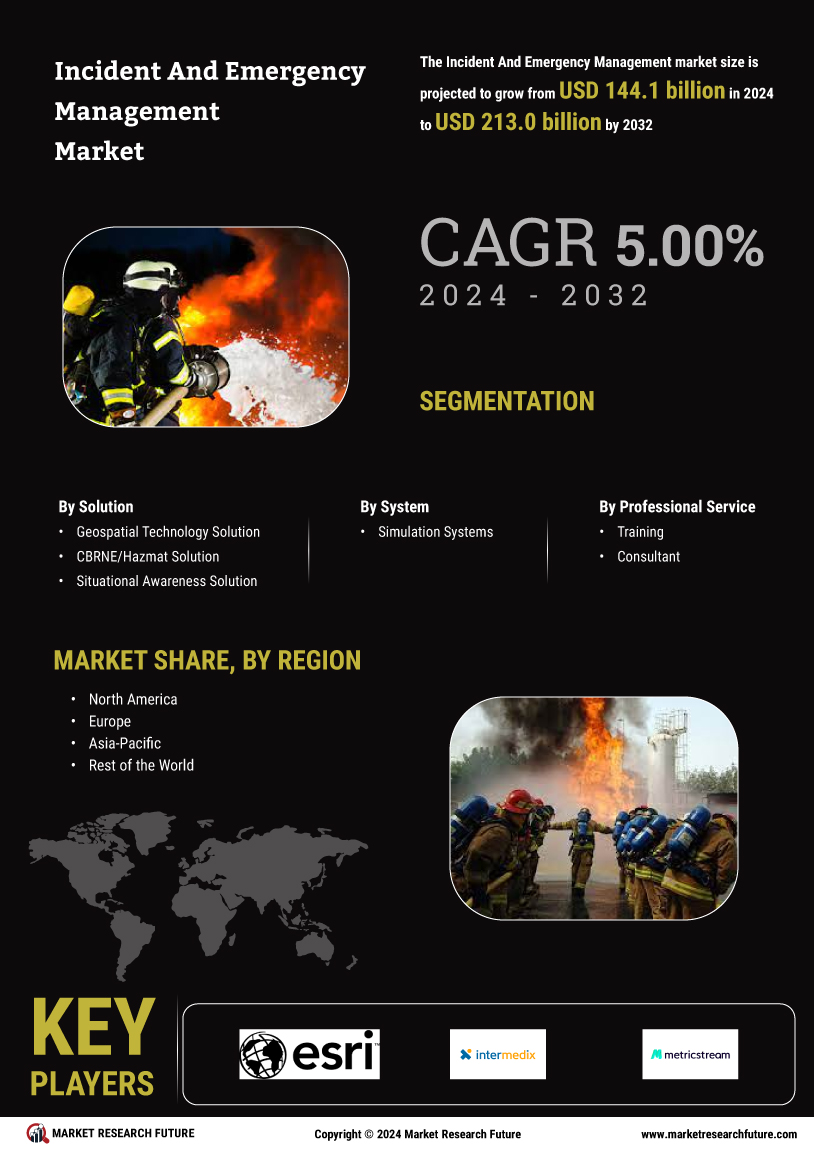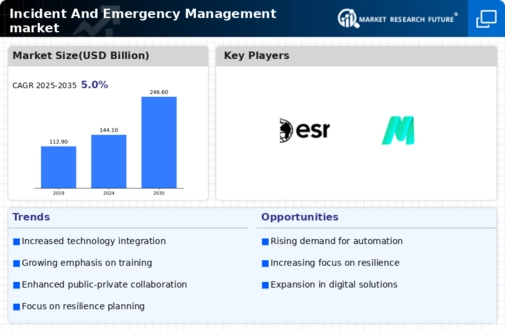Rise of Public-Private Partnerships
The emergence of public-private partnerships (PPPs) is becoming a significant driver in the Incident And Emergency Management Market. These collaborations between government entities and private organizations facilitate resource sharing and enhance the overall effectiveness of emergency response efforts. By pooling expertise and resources, PPPs can lead to more innovative solutions and improved service delivery. Recent studies suggest that such partnerships can reduce response times by up to 25 percent during emergencies. As the need for efficient incident management continues to grow, the trend towards PPPs is likely to expand, further propelling market growth.
Increasing Frequency of Natural Disasters
The rising incidence of natural disasters, such as hurricanes, floods, and wildfires, appears to be a primary driver for the Incident And Emergency Management Market. According to recent data, the frequency of extreme weather events has increased by approximately 30 percent over the last decade. This trend necessitates enhanced preparedness and response strategies, prompting governments and organizations to invest in advanced incident management systems. The growing awareness of climate change impacts further emphasizes the need for robust emergency management frameworks. As a result, the market is likely to witness significant growth as stakeholders seek to mitigate risks associated with these disasters.
Government Regulations and Funding Initiatives
Government regulations and funding initiatives play a crucial role in shaping the Incident And Emergency Management Market. Many countries are implementing stricter regulations regarding disaster preparedness and response, which compels organizations to enhance their emergency management capabilities. For example, recent legislation mandates that local governments develop comprehensive emergency plans, leading to increased investments in training and technology. Additionally, funding from federal and state agencies for emergency management programs has seen a notable increase, with allocations reaching billions of dollars annually. This financial support is likely to drive market growth as organizations seek to comply with regulatory requirements.
Technological Advancements in Emergency Response
Technological innovations, including artificial intelligence, drones, and real-time data analytics, are transforming the Incident And Emergency Management Market. These advancements facilitate more efficient resource allocation and improve situational awareness during emergencies. For instance, the integration of AI-driven predictive analytics can enhance decision-making processes, potentially reducing response times by up to 40 percent. Furthermore, the adoption of mobile applications for emergency alerts and communication is on the rise, with a projected market growth rate of 15 percent annually. Such technologies not only streamline operations but also empower communities to respond effectively to incidents.
Growing Public Awareness and Community Engagement
There is a noticeable increase in public awareness regarding the importance of emergency preparedness, which is influencing the Incident And Emergency Management Market. Educational campaigns and community engagement initiatives are fostering a culture of preparedness, encouraging individuals and organizations to take proactive measures. Surveys indicate that approximately 70 percent of the population now recognizes the need for personal and community emergency plans. This heightened awareness is likely to drive demand for training programs and resources, as communities seek to enhance their resilience against potential incidents. Consequently, the market may experience growth as stakeholders respond to this demand.


















Leave a Comment